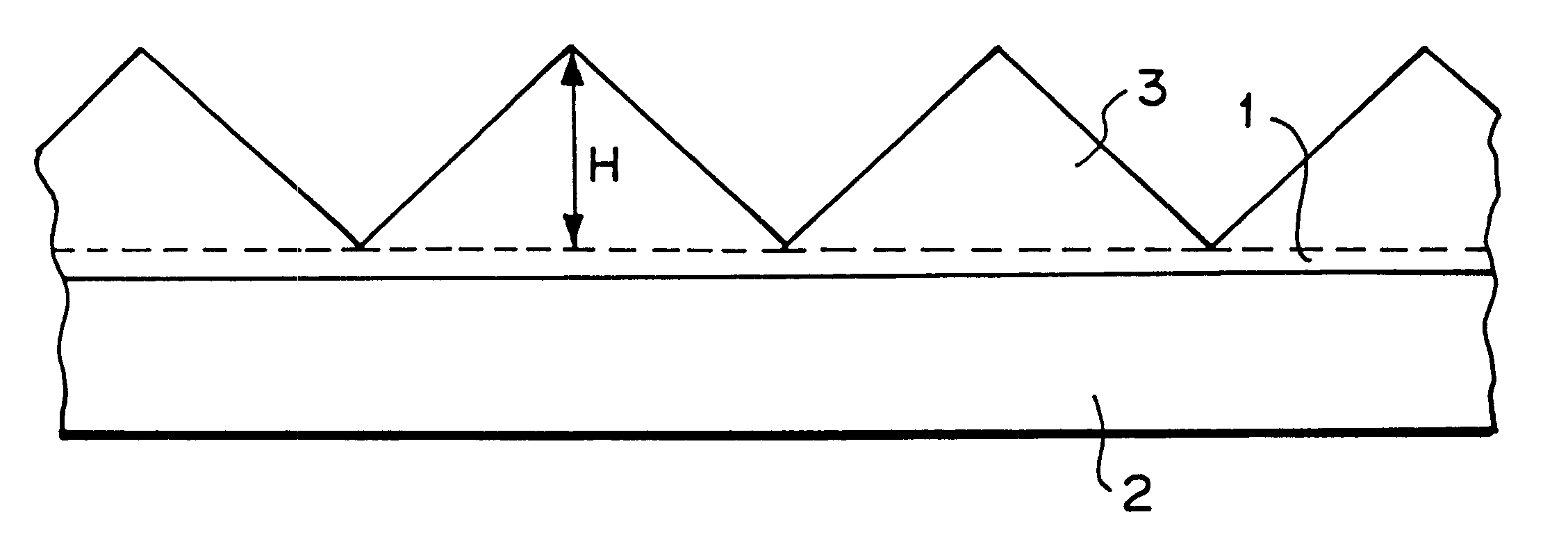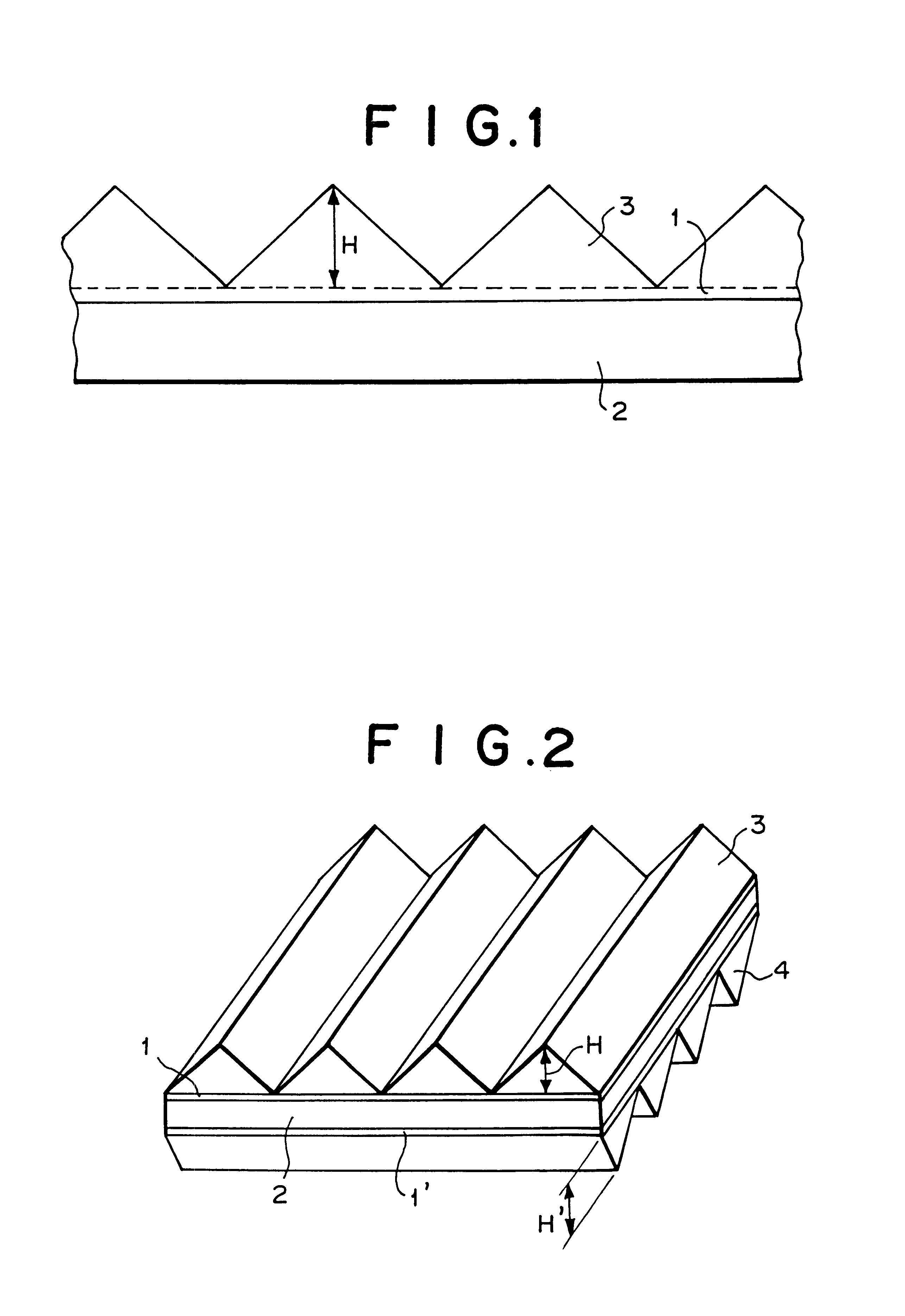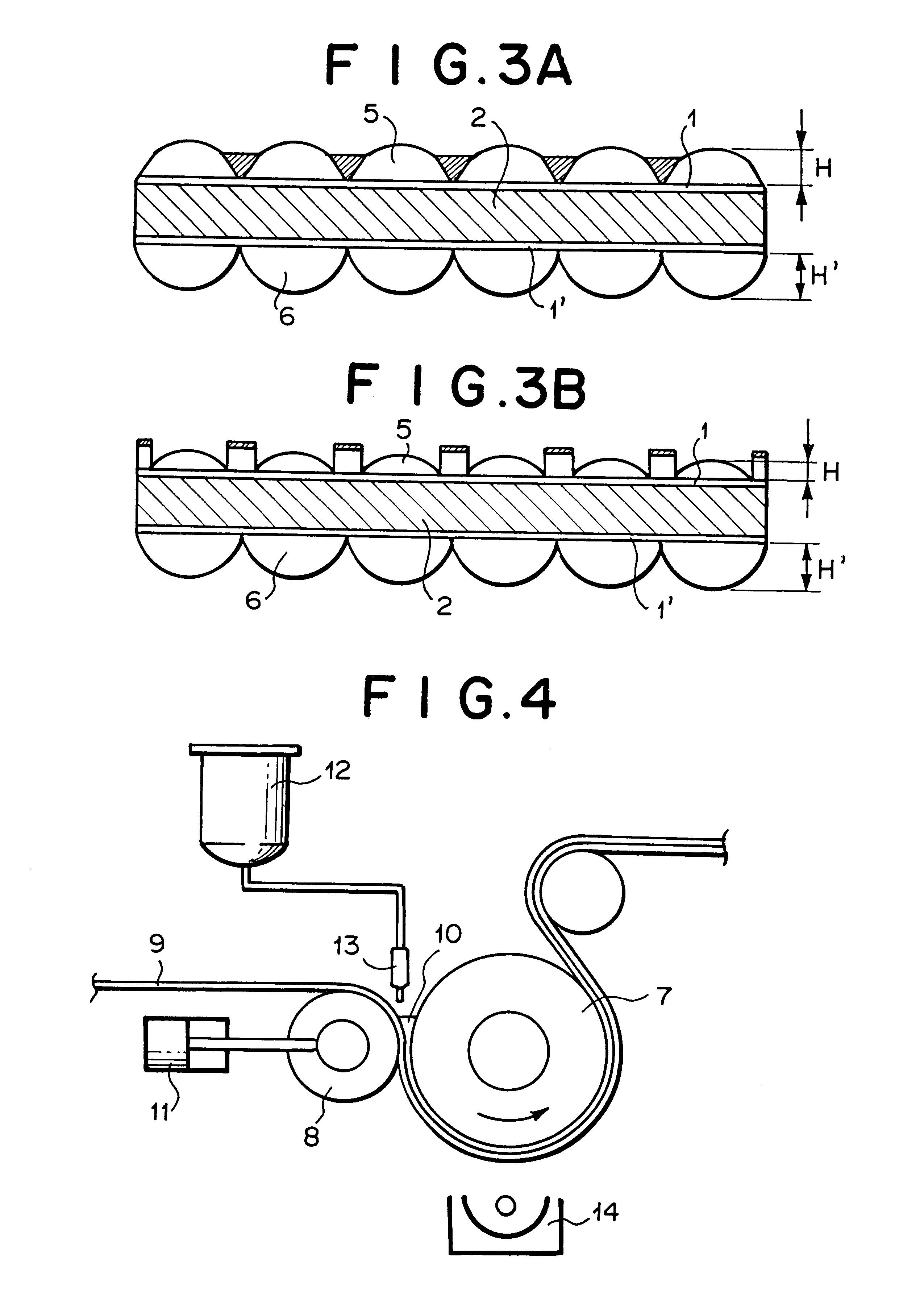Lens sheet and method for producing the same
a technology of lens sheet and method, which is applied in the direction of non-linear optics, printing, instruments, etc., can solve the problems of significant large proportion of the total power consumption of liquid crystal display apparatus, and prolonging the operation time duration
- Summary
- Abstract
- Description
- Claims
- Application Information
AI Technical Summary
Problems solved by technology
Method used
Image
Examples
example 2
A prism sheet (lens sheet) was obtained in the same manner as Example 1 except the following: There was used a cylindrical lens-forming mold which was constituted by a thin-plate lens forming mold with step portion, which had a prism portion transferring pattern and a pair of step portions. The step portions having the width of 10 mm were located at both ends of a thin plate made of brass (JIS Brass Type 3) having a thickness of 1.0 mm and a size of 400 mm.times.690 mm. The prism portion transferring pattern was located at an area between the step portions, where the thickness of the thin plate was reduced by 0.002 mm as compared with the step portions. The prism portion transferring pattern was for use in transfer-forming of a prism portion having a plurality of elongated prisms extending in parallel to each other, the prisms having an isosceles triangular cross section of the vertical angle of 65.degree., the height of 39 .mu.m and the pitch of 50 .mu.m.
The cross section of the pr...
example 3
As shown in FIG. 15, a hard copper plated layer 32 of Vickers hardness of 200 having the thickness of 100 .mu.m was formed on the circumferential outer surface of a core roll 16 made of iron having the diameter of 200 mm and the length of 450 mm. On the copper plated layer 32, there is formed a prism portion transferring pattern for use in transfer-forming of a prism portion having a plurality of elongated prisms extending in parallel to each other, the prisms having an isosceles triangular cross section of the vertical angle of 65.degree., the height of 39 .mu.m and the pitch of 50 .mu.m, to thereby obtain a first cylindrical lens-forming mold. The prism portion transferring pattern had a plurality of elongated prism transferring portions 18 extending in parallel to each other in the circumferential direction of the core roll 16 which is perpendicular to the axial direction of the core roll 16.
On the other hand, as shown in FIG. 16, a thin-plate lens forming mold 15' was provided, ...
example 4
As shown in FIG. 19, a first thin-plate lens forming mold 34 was provided, which has a lenticular lens portion transferring pattern on the surface of a thin plate made of brass (JIS Brass Type 3) having a thickness of 2.0 mm and a size of 1000 mm.times.790 mm. The lenticular lens portion transferring pattern was for use in transfer-forming of a lenticular lens portion for light emitting side having the height of 120 .mu.m and the pitch of 420 .mu.m. The thin-plate lens forming mold 34 was coated with an electroless nickel plated layer in order to prevent various kinds of corrosions. Then, a cylindrical roll 16 made of stainless steel having the diameter of 250 mm and the length of 1000 mm was provided. The thin-plate lens forming mold 34 was wrapped round the roll 16, and fixed on the circumferential outer surface of the cylindrical roll 16 with screws to obtain a first cylindrical lens-forming mold. In the same manner, there was obtained a second cylindrical lens-forming mold which...
PUM
| Property | Measurement | Unit |
|---|---|---|
| transparent | aaaaa | aaaaa |
| vertical angle | aaaaa | aaaaa |
| vertical angle | aaaaa | aaaaa |
Abstract
Description
Claims
Application Information
 Login to View More
Login to View More - R&D
- Intellectual Property
- Life Sciences
- Materials
- Tech Scout
- Unparalleled Data Quality
- Higher Quality Content
- 60% Fewer Hallucinations
Browse by: Latest US Patents, China's latest patents, Technical Efficacy Thesaurus, Application Domain, Technology Topic, Popular Technical Reports.
© 2025 PatSnap. All rights reserved.Legal|Privacy policy|Modern Slavery Act Transparency Statement|Sitemap|About US| Contact US: help@patsnap.com



